You may have a chance to see a comet this month.
All you need to see Comet 12P/Pons-Brooks, along with good weather and a little luck, are good binoculars or a telescope and a sky map to help you find where this celestial rogue is located. The comet is named after two of the most famous comet chasers of all time.
First, let’s talk about how it was discovered, how much we know about it from a historical perspective, and finally, when and where to look for it.
Relating to: Comets: Everything you need to know about the ‘dirty snowballs’ of space
explorers
TOP TELESCOPE SELECTION:

Want to see Comet 12P/Pons-Brooks for yourself? We recommend the Celestron Astro Fi 102 as our top pick in our guide to the best telescopes for beginners.
Jean-Louis Pons (1761-1831) was a French astronomer who remains the greatest visual comet discoverer of all time. In today’s world, comets are routinely found far out in space, too far away to be detected by the human eye, but are captured using robotic cameras attached to large telescopes here on Earth or from satellites in space.
In contrast, Pons made most of his discoveries using telescopes and lenses of his own design; His “Great Chercheur” (“Great Seeker”) was an instrument with a large aperture and short focal length, similar to telescopes that today’s amateurs would call “comet seekers.” Pons is known today for his visual discovery of 37 comets (still a record) from 1801 to 1827.
One of these discoveries took place on July 12, 1812. Pons described it as “a shapeless object with no apparent tail” when it was first seen, but over the next month the comet became bright enough to be faintly visible to the naked eye. On August 15 of the same year, it reached its peak brightness at fourth magnitude (Magnitude indicates the degree of brightness of an object. The lower the magnitude value, the brighter the object.) The new comet also had a split tail of about three degrees.
Orbital calculations suggested that comet Pons was periodic, taking between 65 and 75 years to orbit the sun.
On September 2, 1883, British-born American comet observer William R. Brooks (1844-1921) found it by accident. Like Pons, Brooks was a prolific explorer of comets. In fact, he ranks second after Pons with a total of 27 visual discoveries. Until the first orbital calculations of Brooks’ discovery were made, it was not realized that this comet was the same as the comet Pons found in 1812. So this comet now bears the surnames of both observers.
With an orbital period of approximately 71 years, the Pons-Brooks comet is considered a “Halley-type” comet, that is, a comet with an orbital period between 20 and 200 years and usually appearing only once or twice during a person’s lifetime. Other comets with similar orbital periods include 13P/Olbers, 23P/Brosen-Metcalf and, most famously, 1P/Halley. It is now cataloged as 12P/Pons-Brooks, as it is the twelfth comet for which a definitive orbital period has been calculated.
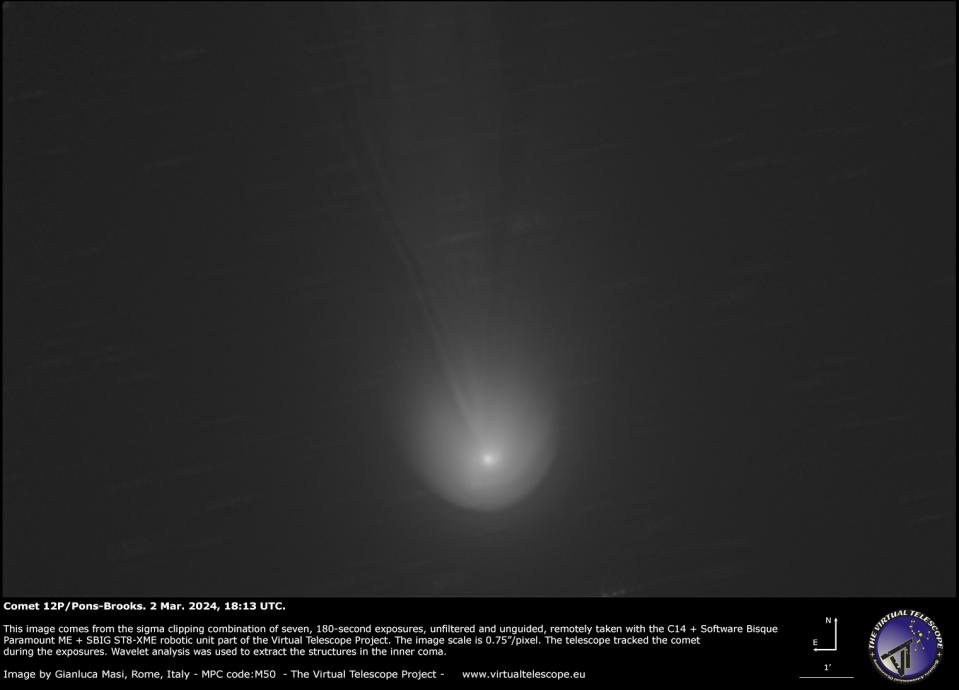

past performances
The outlook for 12P/Pons-Brooks in 1883-1884 was quite positive, as it made its closest approach to Earth on January 10, 1884, just 16 days before it passed closest to the sun (perihelion) at an altitude of 58.6 million miles (94.3 million km). ) at a distance of 72.5 million miles (116.7 million km). During this time period, the comet reached third magnitude, and when viewed through binoculars, a tail approximately 20 degrees long was visible.
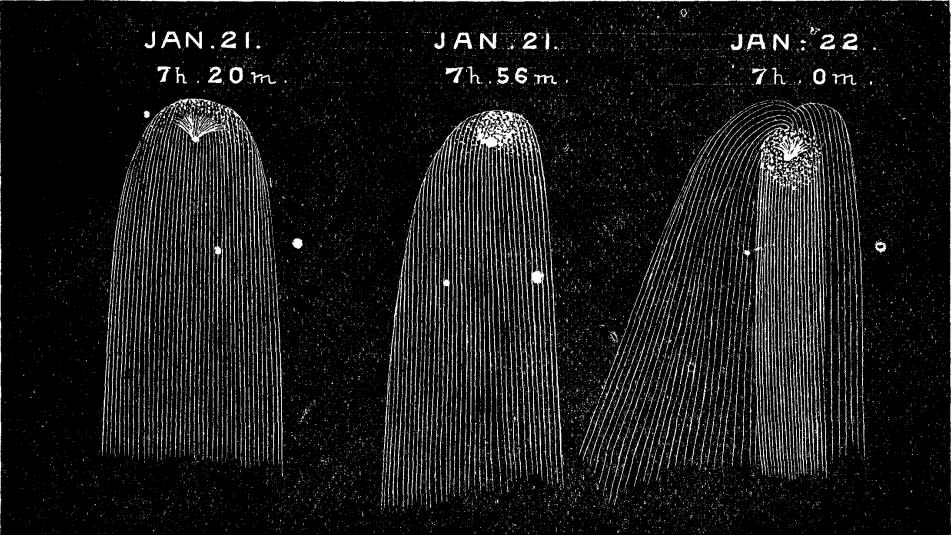

This comet appears to be at its best when it reaches perihelion in late autumn or early winter. in 2020 German astronomer Maik Meyer He showed that a naked-eye comet mentioned by the Chinese in November 1385 and another observed by an Italian astronomer in January 1457 were probably relatively bright ghosts of 12P/Pons-Brooks. There is some evidence that an ancient record of a bright comet dating back to AD 245 may also be 12P.
Also of particular interest in 1883-1884 was that on several occasions this comet was apparently prone to sudden outbursts or flashes of brightness, which helped brand it as a capricious comet.
In fact, 12P/Pons-Brooks experienced four more unexpected outbursts as it headed for its next return near the sun in May 1954. However, at its closest approach to Earth that year, the comet was 2.5 times farther away than in 1884 and therefore not as bright or impressive; It peaked at magnitude +6.4 (near the threshold of visibility with the naked eye) and a tail that was only half a degree long.
flash source
This year, 12P/Pons-Brooks will reach perihelion on April 21, but it is already up to its old tricks with sudden flares in brightness. An unexpected burst of brightness last July 20 caused it to briefly become nearly 100 times brighter, and the expanding shell of gas surrounding its core (called a coma) expanded, to some, like a horseshoe.
But others have suggested the horseshoe crab, the Millennium Falcon from Star Wars, the cartoon character Yosemite Sam, or even — as many news media call it — a devil’s horns, aka the devil’s horns. “The Devil’s Comet.” Other explosions occurred on October 5, November 1 and 14, December 14, and most recently on January 18.
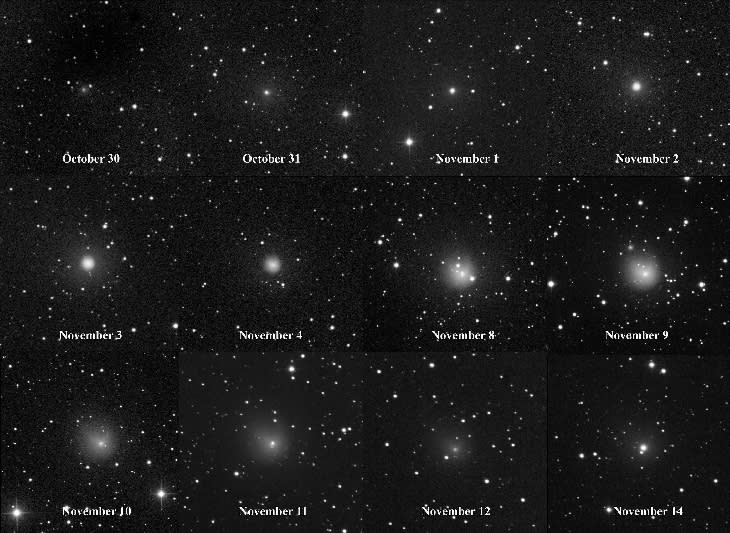

And additional flare-ups look possible as this month progresses.
The exact cause of these eruptions is unknown, but Richard Miles of the British Astronomical Society thinks 12P may be one of 10 to 20 known comets with active ice volcanoes. “Magma” is a cold mixture of liquid hydrocarbons and dissolved gases, all trapped beneath a waxy surface. These bottled volatiles can explode when sunlight opens a crack.
For this reason, some have called 12P a “cryovolcanic comet.”
Tracking the comet
From now until the end of March, 12P/Pons-Brooks will be visible in the early evening, hovering in the upper left of the Great Pegasus Square and about 20 degrees above west, toward the constellation Princess Andromeda. -northwestern horizon at the end of evening twilight.
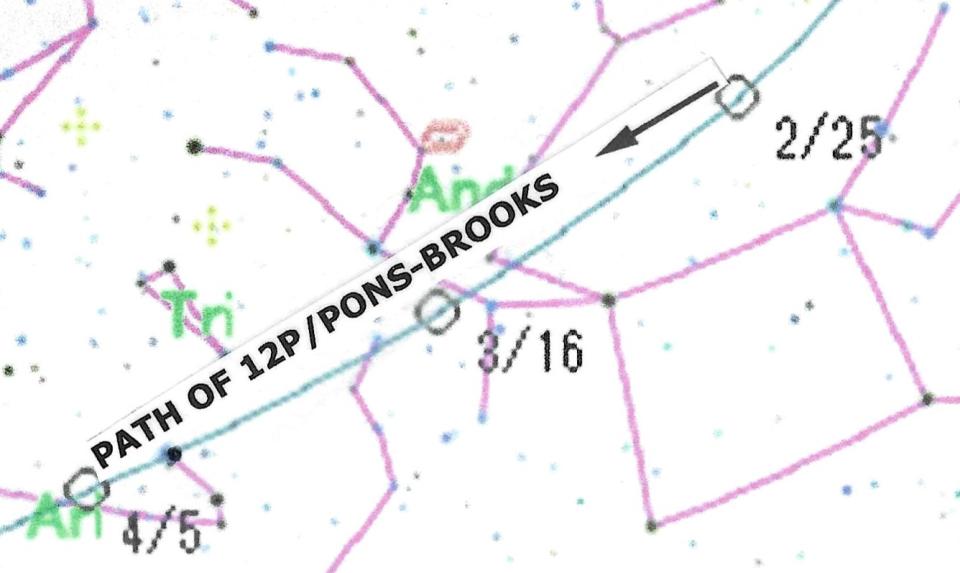

With the help of a good sky map and a dark sky, it should be easily accessible with binoculars. The apparent night-to-night motion will now accelerate as it approaches the sun. By the middle of the month, Pisces will have passed into Pisces; Now maybe a 6th magnitude object should be a nice sight for binoculars.
And towards the end of March it can brighten up to the 5th magnitude and become visible to the naked eye against the background of Aries. There may have been a short queue by now.
The comet will then disappear in the sunset glow throughout April, reaching perihelion on April 21 at a distance of 72.6 million miles (116.8 million km). 12P/Pons-Brooks will pass 22 degrees northeast of the sun in mid-April, but will then fade very quickly and become largely an object for Southern Hemisphere observers. It will probably have fallen to the 6th or 7th magnitude by the end of May and to the 8th or 9th magnitude by the end of June.
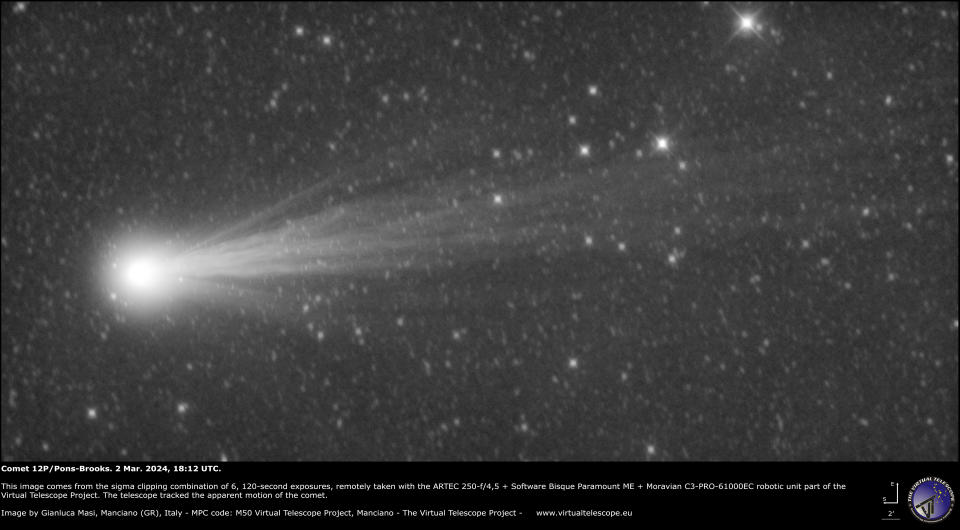

Future eruptions and solar eclipses
There are some rumors that 12P/Pons-Brooks could turn into a very bright, even spectacular object if it experiences another flare in the coming weeks. Unfortunately, this seems unlikely. Space.com asked renowned comet expert John Bortle to provide an assessment of how the comet might “perform” in the coming days.
His belief is that although 12P/Pons-Brooks brightened dramatically last summer when the comet was far from the sun and began to become active, the comet will not be able to brighten very much in the event of any flares occurring in the near future. because the comet is now much closer to the sun, its overall brightness has increased significantly.
“As a result,” Bortle notes, “the brightness of the explosion cannot so easily overwhelm the overall brightness of the comet’s coma.”
Therefore, any additional flare or explosion would likely result in only a small increase in the comet’s brightness.
There were also rumors that 12P might appear during the total solar eclipse on April 8. “But,” Bortle adds, “I think this is more of a fantasy than anything else.” In fact, the comet is not expected to reach much brighter than magnitude +4.5 during the eclipse; Too dim to see – even with a little help from a glare.
Next time?
After 12P/Pons-Brooks returns to space, it will take another 71 years for it to complete another full orbit around the sun. For most of us, this year’s appearance will be the only time we’ll see it.
But the many young people around now may get a second opportunity in the summer of 2095. Japanese orbiter Hiroshi Kinoshita of the National Astronomical Observatory of Japan (NAOJ) calculated that 12P would reach perihelion on August 10. year.
If you want to see Comet 12P/Pons-Brooks or any other comet in the night sky for yourself, our guides to the best telescopes and best binoculars are a great place to start.
If you’re looking to take photos of Comet 12P/Pons-Brooks or the night sky in general, check out our guide on how to view and photograph comets, as well as our best cameras for astrophotography and our best lenses for astrophotography.
Joe Rao is an instructor and visiting professor in New York Hayden Planetarium. writes about astronomy Natural History magazine, Farmer’s Almanac and other publications.